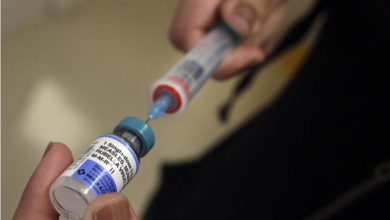Unlocking Precision in Chemical Analysis: A Deep Dive into Gas Chromatography Instruments

In the intricate world of chemical analysis, precision, reproducibility, and sensitivity are crucial. Among the most widely used technologies for achieving such analytical excellence is gas chromatography. At the center of this powerful method lie gas chromatography instruments indispensable tools that have become the backbone of modern laboratories in pharmaceuticals, environmental sciences, petrochemicals, food safety, and forensics.
This article provides an in-depth look at gas chromatography instruments—their components, functionality, applications, selection criteria, and how they continue to revolutionize analytical chemistry in the 21st century.
What Are Gas Chromatography Instruments?
Gas chromatography instruments are laboratory devices used to separate and analyze compounds that can be vaporized without decomposition. The technology relies on a mobile gas phase (typically an inert gas like helium or nitrogen) to carry a mixture through a column packed with a stationary phase. As each component of the mixture travels through the column at a different rate, they are separated and detected individually.
This technique is ideal for volatile and semi-volatile compounds, enabling scientists to assess both the quality and quantity of chemicals in a mixture.
See also: concrete pumps: The Cornerstone of Sustainable and Modern Construction
Key Components of Gas Chromatography Instruments
Gas chromatography instruments are built from a collection of integrated components, each performing a specific role in the analytical process:
1. Carrier Gas System
This is the lifeline of the chromatography process. Helium, hydrogen, or nitrogen is used to transport the vaporized sample through the column. The gas must be of high purity and flow at a precisely controlled rate.
2. Injection System
The injector introduces the sample into the instrument. It’s typically heated to convert the sample into a vapor form, ensuring smooth entry into the column.
3. Analytical Column
The column is where the actual separation happens. It’s filled with a stationary phase that interacts with the sample molecules, causing each compound to elute at a unique time (retention time). Columns vary in length, diameter, and stationary phase composition depending on the application.
4. Temperature-Controlled Oven
To ensure effective separation, the column is housed inside a thermostatically controlled oven. The oven can maintain a constant temperature or execute a ramped heating program to improve resolution for more complex samples.
5. Detectors
Detectors identify and quantify the separated components as they exit the column. Common types include:
- Flame Ionization Detector (FID)
- Thermal Conductivity Detector (TCD)
- Electron Capture Detector (ECD)
- Mass Spectrometric Detector (when coupled in GC-MS systems)
6. Data Acquisition System
All modern gas chromatography instruments are equipped with software to collect, process, and interpret the output signals, transforming them into chromatograms for visual and numerical analysis.
Advantages of Using Gas Chromatography Instruments
Why have gas chromatography instruments become so widely adopted? Their popularity stems from several performance benefits:
- High Sensitivity and Selectivity: They detect even trace amounts of substances down to parts per billion (ppb).
- Fast Analysis Time: Many samples can be analyzed within minutes.
- Accuracy and Reproducibility: When properly calibrated, the results are consistent and trustworthy.
- Wide Applicability: Suitable for a broad range of industries and sample types.
- Coupling Options: Easily integrated with mass spectrometry for compound identification.
Industries That Rely on Gas Chromatography Instruments
These instruments are central to operations in a wide variety of sectors:
🧪 Pharmaceutical Industry
Used to test the purity of drugs, detect residual solvents, and monitor manufacturing processes.
🌍 Environmental Analysis
Detects pollutants, pesticides, and volatile organic compounds (VOCs) in air, water, and soil.
🍔 Food and Beverage Industry
Ensures compliance with food safety regulations by detecting preservatives, contaminants, and flavor compounds.
🔬 Forensic Science
Analyzes blood alcohol levels, accelerants in arson cases, and drugs of abuse.
⛽ Petrochemical Sector
Monitors fuel composition and quality, ensuring compliance with industry standards.
Types of Gas Chromatography Instruments
Depending on the specific application, laboratories may use different configurations of gas chromatography instruments:
1. Stand-Alone GC Systems
Traditional benchtop instruments used for general-purpose analyses.
2. Automated GC Systems
Equipped with autosamplers and robotic injectors for high-throughput environments.
3. GC-MS Systems
Combining gas chromatography with mass spectrometry provides both separation and structural identification of compounds.
4. Portable GC Units
Compact, field-deployable instruments used in environmental surveys or emergency response.
Choosing the Right Gas Chromatography Instrument
When selecting from the many gas chromatography instruments available in the market, here are key factors to consider:
✅ Sample Type and Volume
Some samples may require specific detectors or column types. Consider whether your samples are gaseous, volatile liquids, or dissolved in solvents.
✅ Analytical Requirements
Determine the required detection limits, number of samples per day, and the resolution needed for your study.
✅ Budget and Cost of Ownership
Evaluate both upfront costs and long-term maintenance, including consumables like columns, gases, and syringes.
✅ Software and User Interface
Look for systems that offer intuitive interfaces, automatic calibration, and customizable analysis parameters.
✅ Technical Support and Warranty
Choose suppliers that offer strong after-sales support, spare parts availability, and training programs.
Maintenance and Best Practices
Maintaining gas chromatography instruments is critical to ensuring their longevity and accuracy. Here are best practices:
- Regularly check for leaks and gas flow inconsistencies.
- Clean or replace the injector liner and septum as needed.
- Store and handle columns with care—always cap them when not in use.
- Periodically calibrate detectors to maintain precision.
- Update software regularly to benefit from bug fixes and new features.
Future of Gas Chromatography Instruments
As technology evolves, so do gas chromatography instruments. Here are some key trends shaping the future:
🌱 Sustainability
Manufacturers are reducing instrument footprints, optimizing carrier gas usage, and exploring eco-friendly materials.
🧠 AI Integration
Machine learning is being used to improve peak identification, retention time prediction, and system diagnostics.
📶 Remote Monitoring
Cloud-connected GC systems now allow users to monitor and control analysis remotely.
🧬 Microfluidics and Miniaturization
Micro-GC devices are gaining traction for on-site testing with reduced sample and reagent needs.
Top Global Manufacturers
Some of the most reliable gas chromatography instrument manufacturers include:
- Agilent Technologies
- Thermo Fisher Scientific
- Shimadzu
- PerkinElmer
- Scion Instruments
- Bruker
These companies offer systems with varying levels of sophistication, from entry-level machines for academic use to advanced GC-MS instruments for regulatory testing.
Conclusion
Whether you’re identifying toxic compounds in water or ensuring the purity of a life-saving medication, gas chromatography instruments are at the forefront of scientific analysis. They enable researchers and technicians to produce accurate, timely, and reproducible results across a spectrum of disciplines.
As industries push for greater precision and efficiency, investing in a high-quality gas chromatography instrument—paired with proper maintenance and skilled operation—can be a decisive factor in achieving analytical success.







